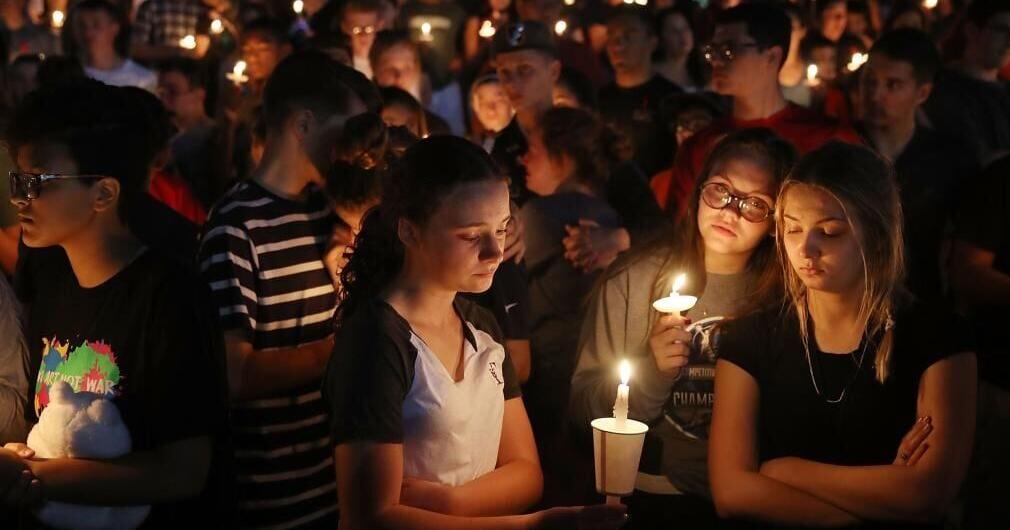As of 2024, firearms are the leading cause of child deaths in the U.S. Through new research from Health Affairs, Northwell Health partnered with Stacker to examine the effects of nonfatal firearm injury on young survivors.
Research on gun violence is finally in a state of resurgence after the Dickey Amendment, passed in 1997 and supported by the National Rifle Association of America, halted such research and funding for over a decade. More research couldn’t come at a better time: Every day in the U.S., 120 people die from firearms, and over 200 are injured by them, according to Centers for Disease Control and Prevention data. National data on nonfatal gun violence injuries aren’t collected in the U.S., making studies particularly difficult.
While mass shootings are a near-constant headline in U.S. media, they only comprise a small portion of all gun-related fatalities, which also include suicide, community violence, domestic violence, intimate partner violence, and hate crimes. An analysis of violence against women in the U.S. from Everytown for Gun Safety Support Fund found that nearly 1 million women living today have experienced an intimate partner either shooting them or shooting at them.
A 2017 study showed that women who have experienced domestic violence are at risk for developing psychological symptoms, including post-traumatic stress disorder, due to their partner’s possession of or access to a gun. After interviewing 1,300 American adults, SurveyUSA found that about 3 in 5 (59%) either have personally experienced gun violence or know someone who has; 2 in 5 (41%) of these adults said they were traumatized by such violence.
The Health Affairs study found that children and adolescent survivors of firearm injuries experience over twice as many pain disorders, 68% more psychiatric disorders, and a 144% increase in substance use disorders compared to those who did not experience such events. Survivors’ parents also reported increased rates of psychiatric disorders and mental health visits.
In a 2021 study for Congress conducted by the Government Accountability Office, an expert noted whether the violence was interpersonal or self-inflicted can factor into the kind of behavioral health care a survivor needs. Experts also told the GAO that stays of five days or longer in intensive care put patients at risk of developing further physical, cognitive, and psychiatric symptoms, which may require more health care needs after their initial discharge. Some gun violence survivors will need lifelong care, they said.
The effects of gun violence on mental health can include anxiety, depression, and PTSD. Hypervigilance and fear are also commonly present, with some survivors expressing not wanting to leave their homes, according to research published in the Journal of Trauma Nursing.
Survivors with continued experiences of anxiety, depression, and consistent negative thinking grounded in the fear of sudden violence may experience anticipatory stress reactions when reliving the memory of gun violence, such as the fear of being exposed to another shooting through the news. Charles Figley, Ph.D., a professor of social work and director of the Tulane University Traumatology Institute in New Orleans, told Social Work Today that survivors may also adapt to the possibility of experiencing danger again by becoming skilled at staying safe—a practice he attributed to war veterans—such as learning how to interpret noises, faces, and body language. This hypervigilance, as Figley explained, takes a toll on their psychosocial, medical, and mental health.
Despite their needs, survivors often face barriers to accessing care when services are not covered by their insurance, according to the GAO report. An American Academy of Pediatrics study found that more than 3 in 5 (63%) children aged 5 to 17 nonfatally injured by firearms did not receive mental health care services within six months of the shooting, according to an analysis of Medicaid data, which was not included in the scope of the Heath Affairs study. The AAP research also showed that non-Hispanic Black youth were less likely to have any mental health follow-up than non-Hispanic white youth.
The study published in Health Affairs on the consequences of firearm injuries in survivors and the impacts on victims’ family members used commercial insurance data as a foundation for its research, subsequently lacking data on individuals with insurance through the state or federal government. Consequently, the findings underestimate the ripples gun violence creates, according to STAT News. Additionally, this means the findings undercount the impacts of suicide inflicted by a firearm, as most people who die from suicide never reach the hospital, and thus no insurance claim is created.
On the other side of the spectrum, survivors of gun violence may “feel like they’re invincible,” Lauren Magee, an assistant professor of criminal justice and expert on gun violence and its impact at Indiana University–Purdue University Indianapolis, told Scientific American. This effect can cause more risky behavior, such as drug use among teens and adults. Younger survivors may reenact their trauma, called “traumatic play,” Nicole R. Nugent, Ph.D., a professor and research scholar in the Alpert Brown Medical School’s Department of Psychiatry and Human Behavior, told The New York Times.
![]()

